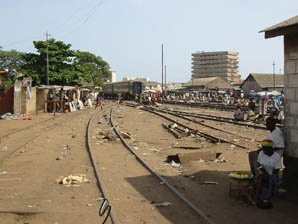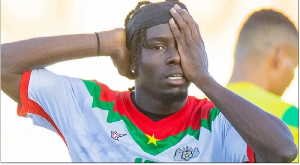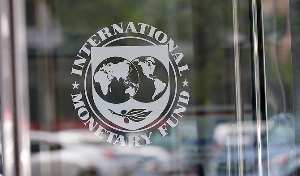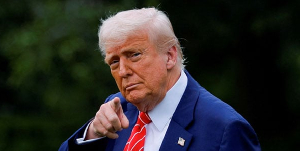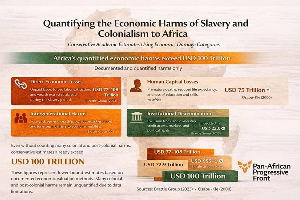*(Serious overpricing in key projects and lack of coherence in national strategy)*
July 2011
We agree with the Honourable Minister of Railways on his assertion that Ghana cannot boast of a comprehensive development strategy without a solid railway policy. His comments regarding the importance of executing whichever policy is drafted, debated, validated, reviewed, re-drafted before – as is our style in Ghana – being finally approved by cabinet are even more spot on.
But nice words are not enough. Successive governments have all passed the test of rhetoric on railways.
The current government, like many before it, seems genuinely interested in seeing some of the hustle and bustle translated into actual kilometres of railways on the ground. We are, sadly, not convinced however that the Administration, apart from a tenacious emphasis on Chinese money, has made any real progress in improving the coherence of railway policy, in comparison withpast Administrations.
In 2007, a company called Kampac won a reported $1.7 billion dollar contract to construct a railway track linking the port at Takoradi to an obscure town in Ghana’s extreme north called Hamile.
It is unclear how closely this optimistic project aligned with any well-planned national rail network system proposal, but that point was probably moot from the start, seeing as “Kampac”, one of a number of entities held by an entity known as Kampac International PLC, is more noted for announcing multi-billion dollar deals than executing them.
In fact, the closest Kampac has come to project execution in Ghana is when they got the musician Becca to pledge substantial sums of money to fund health insurance costs for struggling children only to do a runner when the time came to redeem the pledge. We say this in cheek, but the truth is that Kampac has never really shown itself capable of executing the giant undertakings it likes to take on.
We bring up the issue of Kampac because its involvement in the recent past in railways projects in the country is reflective of the chaos in our railway policymaking process, which has seen assorted “big shots” from all branches of successive ruling parties and administrations, as well as their cousins and nieces, thronging the corridors of power with railway charts bundled under their armpits looking for takers.
And if you thought Kampac is lying low, think again. As far as the promoters of the Kampac deal are concerned they are very much still in business since the life of the contract is 37 years; so much so that they ensured prime featuring of the project in a brochure last year during an announcement of a “1 billion Euro reverse merger listing”.
It is true that Kampac did announce an agreement with Global Yield Fund for a EUR200 million injection last year. Seeing however that Global Yield Fund has not succeeded in consummating a number of much smaller deals from 2010 onwards (example: a $5 million credit line to Intertainment ltd which was terminated before delivery), it is doubtful that Kampac has received any of this EUR200 million, and it certainly doesn’t seem to have made any progress raising the EUR1 Billion it tried to secure from its Frankfurt listing.
Simply put, whoever was responsible for due diligence during the negotiation of government’s agreement with Kampac failed to conduct preliminary evaluation of the capacity of the project stakeholders before publicly pledging government’s support to the deal. What that does is send certain unfavourable signals about the seriousness with which the railway opportunity in Ghana is being packaged by its core promoters – the Government of Ghana – for presentation to international investors. That attitude has to stop.
We have centers of expertise in Ghana in these matters, such as AB & David Law, to name but only one, that would gladly help government create a kind of “Administrator General” role in the Cabinet Office to vet all proposed projects for systemic risk if they are asked nicely.
It goes without saying that such a move can only succeed if it follows a consolidation and strengthening of the Cabinet Office to ensure coordination across the technical, financial and political accountability functions of the Executive, which in Ghana have become muddled.
While the Ministry of Finance is required to vet the financial prudency of new projects and ensure compatibility with budget goals, and while it seeks to nurture expertise to do this, the technical details of projects are the domains of respective originating ministries. Yet, very rarely are major decisions regarding major projects taken within sector ministries.
Which is why a Minister of Energy in this beloved Republic or his supporters are compelled to resort to press attacks on colleagues serving on powerful adhoc committees because of disagreements over gas policy in Ghana today.
The Presidency of Ghana should not become, as it risks becoming in the current dispensation, the strategic hub for policy planning from a financial and technical point of view. Political accountability within the executive resides there, and that is enough.
It is because we concede that for most strategic projects the requisite expertise may be spread across multiple ministries, departments and agencies that we argue for the Cabinet Office to be strengthened and given powers that allow it to coordinate expertise across the Civil Service.
It is in the above context that a chief project manager (the afore-titled “Administrator General”) for the government can be given the powers necessary to allow coordination of the right kinds of expertise from across the private and public sectors to properly vet projects regardless of which political grandee is behind it. The use of ad-hoc committees, like the one set up to support the roll-out of STX (or the similar 20-member Victoria Addy committee in the railway sector) must cease, we humbly submit.
Back to railways.
The current game in town in the $6.5/7 billion China-backed, 1,200 plus km railway project. It is understood that the loan facility is being pledged by the China Export-Import Bank for Infrastructure Development, which has redeemed a portion of the pledge to the tune of $990 million via a contract to the China National Machinery & Equipment Corporation. Said contract was reportedly aimed at completing a 24km section of the planned railway line spanning Accra and Tema, and forming the southern extreme of a track that should eventually reach Paga (with a side-track linking Tamale and Yendi) though at the current rate of progress it might take double the projected span of 8 years for this to be achieved.
Even though per the project timetable the Nsawam – Kumasi stretch of the line must commence by September 2011, even land use issues (particularly the eviction of encroachers) are yet to be sorted out. What is vexing is that the pronouncements of key officials familiar with the deal appear to betray the same lack of technical cogency that has plagued many a mega-project deal in the past.
Though the present contract is with respect to rail line infrastructure, which is the only aspect of the project for which information is available in the public domain, the Board Chairman of the relevant parastatal and the sector Minister are already confident about the speed of trains that shall be running on the tracks. Apparently a tripling of speed to 156 km/h is anticipated on the behind-schedule Accra – Tema link. Have they, perchance, already ordered the trains? At any rate these expectations seem fanciful.
Indeed nearly five weeks ago, China slashed by 30% the anticipated speed of its latest bullet trains (Beijing-Shanghai) following evidence of mismanagement of its railway system by the former, disgraced, sector Minister four months ago. A technical audit showed cheap and shoddy craftsmanship and threw into doubt the saliency of the country’s entire high-speed rail program.
Given the comments that have been made by senior rail officials in this country in recent months we are inclined to doubt the quality of technical analysis behind the overall project. We call on the sector Ministry to release more details about the specifications of the project.
To date, it is not even clear who is responsible for developing the end-to-end terminal facilities; whether we are talking double-track throughout; what the estimated cost per km breakdown for each stretch is; what kind of signalling system – simple or complex – is being considered; whether fencing shall be done at high-risk segments; whether any over-water or underground routing may be necessary for optimization purposes; and what the exact revenue generation model is (since it is we the citizens who will eventually have to pay the $7 billion tag).
Furthermore, at $40 million per km the so-called “high-speed” section of the rail system (Accra – Tema) seems to us very overpriced. We are benchmarking the cost against similar high-speed rail projects in China and the Mediterranean - such as Yichang-Wanzhou – where the complexity matches or exceeds the Accra – Tema section.
This benchmarking reveals that the cost of the project is 4 times that of comparable projects elsewhere. Since the Accra – Tema section is the only publicly acknowledged high-speed segment, we can only assume that the rest of the system shall be standard-speed. If our estimation is correct, and there is no sound reason why it isn’t, then the overall system is 3 to 4 times the cost of comparable projects elsewhere.
These are our preliminary analysis based on the publicly available information. We hope most Ghanaians support our call for the Ministry to publish the full specifications and cost analyses.
On a closing, related, note, we also have difficulties with the way Government is treating the western rail project which appears to enjoy the backing of local (we concede that foreign capital is involved) investors, at least with respect to limited stretches of the overall system.
In actual fact the statement we attributed to the Minister at the beginning of this article was with respect to the Western Rail project. He now believes $400 million is required to complete the project. Just like that. No further details. Not a word about how the ongoing attempts by local investors, especially those in the mining sector, to engage can be admitted into the fold of Government machinations (recall that these “attempts” have been going on since 2004).
Once again, it is to China we are looking. A strong “Chinese money is the panacea” logic appears to be gaining a strong foothold in the corridors of power in this country.
It should be recalled that Government cut the sod for the western railway rehabilitation project to commence in January 2011. Indeed in October 2010, we publicly chided the Honourable Minister of Finance for announcing a $500 million deal from Goldman Sachs based on terms in a term sheet that was still being negotiated. It should have been obvious to Honourable Minister that a shrewd, battle-hardened, institution like Goldman does not just dole out cash for poorly articulated projects, with minimal evidence of a medium-risk exit for investors. It is this same oft-commissioned project that is now supposed to be rescued by Chinese money.
At any rate, if by “western railway” Honourable was using the phrase in its usual sense to mean the “Awaso – Takoradi – Kumasi” line then at $400 million the project is overpriced. Given that this is only a redevelopment effort and the single line structure shall be maintained (except, perhaps, for the 30km Takoradi – Manso stretch), a cost per km rate of more than $1 million is problematic. A standard-gauge, single track system with simple signalling and geared towards basic freight can actually be built from scratch for a rate of $1 million per km (the widely cited $1.5 million per km “international average” is based on factors skewed in our favour, such as regulatory costs).
No wonder in 1996 the same job was costed at $150 million. Even discounting the fact that the dollar inflation rate must have been cancelled out by advancement in technology should still give you a figure of about $250 million. A publication of the full specifications of this project and the cost analyses should straighten the record.
Meanwhile, some clarity about the overall rail agenda in this country wouldn’t hurt anybody.
* *
*This report is an initiative of IMANI Center for Policy & Education and syndicated on www.AfricanLiberty.org
General News of Thursday, 7 July 2011
Source: IMANI

